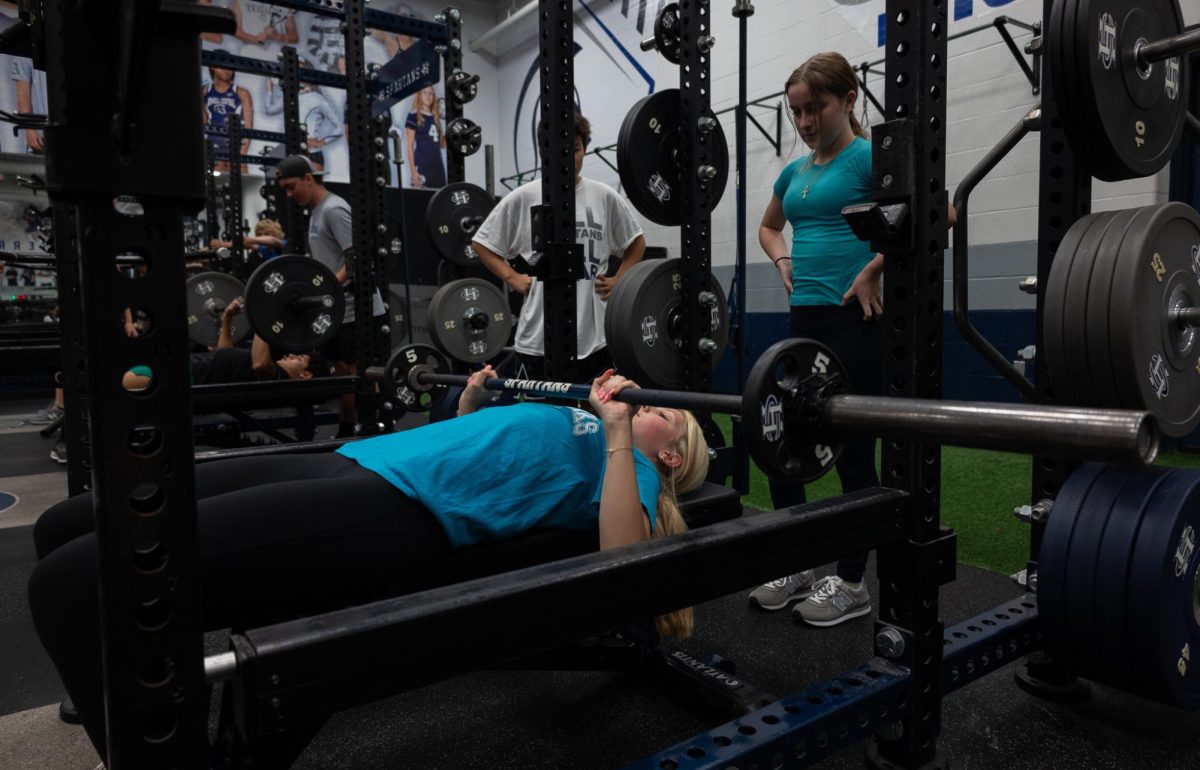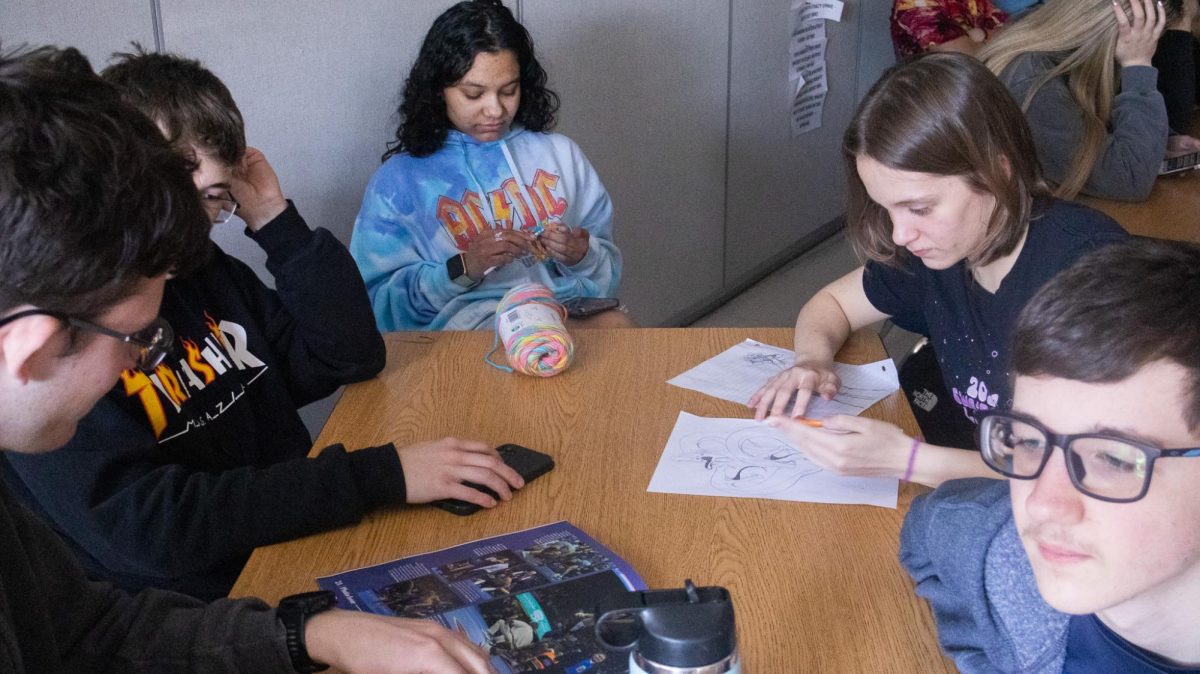The dawn of the holiday season comes with the annual tradition of AP Government teacher Nicholas Beckmann’s cookie competition. Every year, Beckmann implores his students to bring him their best cookie recipe to see which will be ranked the highest. Any cookie is welcome: chocolate chip, peanut butter, sugar, even meringue. I participated in this competition last year when I took Government with Beckmann and won first place with a rating of 8.9 on the cookie scale. Considering that the rating exceeded my expectations, my cookie — brown butter and chocolate chip — had to have been good. Or perhaps, the rating stemmed from me remembering my amendments and court cases. To delve deeper into the matter, I have decided to reveal the recipe that gave me the winning title; additionally, I enlisted my peers who are currently taking a class with Beckmann to be involved in an experiment in which we aimed to discover the truth behind how he ranks his cookies, because that was (clearly) the logical action to take.
Prize Winning Brown Butter Chocolate Chip Cookies
To view the whole recipe, click here.
Ingredients:
- 1 cup of butter (2 sticks)
- 1 cup of brown sugar
- 2/4 cups of white sugar
- 2 eggs
- 2 tsp vanilla extract
- ½ tsp butter extract
- 2 ¾ cups of flour
- 1 teaspoon of baking powder
- 1 teaspoon of baking soda
- ¾ teaspoon of salt
- 2 cups of chocolate chips
- 1 shot of espresso
- 1 tsp flaky salt (for sprinkling)

Obviously, the first step is to brown your butter. Add your butter to a pan and heat it up to a medium-low temperature. Now, you’re going to need to consistently stir the butter, and wait for it to bubble. This requires a lot of patience, of course. You’ll know the butter is done when it has a good amount of brown bits at the bottom of the pan, and when it emits a nutty scent. Quickly transfer the butter to a heat-safe bowl.

At this point, the butter needs to cool down, so mix all your dry ingredients together. Leave them to the side for now. When the butter is finally cool to the touch, combine it with the sugar mixture. When the sugar and butter is combined well, add in the eggs and the extracts. Once your liquid ingredients are all mixed together, you can add the dry mixture with them. Using an electric mixer once more, combine the wet and dry ingredients into cookie dough. Oh, and don’t forget the chocolate chips.

Once the cookie dough is combined, I like to add a shot of espresso because I am a caffeine addict. I add in a little at a time, and if I feel that the cookie dough’s consistency is good enough, I don’t add in anymore — I just drink the rest of the coffee left over.
Now, I would usually line a pan with parchment paper and scoop out the cookie dough using an ice cream scooper. Personally, I like to make my cookies huge. If it’s not the size of my palm, the cookie is insufficient. It’s important to make sure that there’s a lot of space between each cookie, about two inches apart. Right before baking, I add a sprinkle of flaky salt to each cookie. Now, ready to go in the oven, the cookies need to bake at 350 for 12-14 minutes.

The moment the cookies pop out of the oven, you’ll notice that they have the sweetest scent, and look amazing. Doing something as simple as browning the butter gives the cookies a much more unique flavor that makes it a crowd favorite. I haven’t gone back to using regular butter since; it’s techniques like these that make all the effort worth the result. I always associate this recipe with Beckmann’s cookie competition; something so insignificant on the objective side, but on a personal level, getting the highest ranking did make me feel accomplished. I truly felt that I had upheld democracy by making super yummy cookies.

The Experiment
The annual Beckmann cookie competition at FHC brings all the AP Government students together to see if they can whip up a sweet treat that will earn their instructor’s approval. Now, there have been some speculations among the student body that the competition is perhaps rigged. There are concerns over whether or not Beckmann rates the cookies on its raw quality, or rather, student favoritism. Junior Luke Stallings, who is taking AP Government with Beckmann, feels there is an underlying bias driving Beckmann’s rankings.
“I don’t have the best grade in this class, and I mean, he’s going to have some favorites,” Stallings said.
However, junior Anshdeep Thind thinks otherwise.
“I think he tries to be unbiased in every way possible, and that’s reasonable because he’s the one trying it, so it’s based on his personal preferences,” Thind said.
So, are the cookies ranked on the American principles of equality and justice, or is there the possibility of corruption running amok at Francis Howell Central? Regardless of what the students feel, the only way to discover if the competition is biased or not is to go down the scientific route. Utilizing the basic components of experimental design that I was able to remember from my AP Statistics class, I provided students, such as Stallings and Thind, each with a cookie. I used the recipe that won me the competition last year just to see if it really owns up to its status of being well renowned. The experimental units handed out the cookies to Beckmann, and collected the results on how he ranked the same cookie recipe — unknowingly, of course.
The first participant, senior Carrie Byrne, received a score of 8.6, and was told her cookie was “rather grainy” (I found this critique quite offensive). Thind received an 8.5, while Stallings also received an 8.6, the highest score in his class. The similarities between each participant’s ratings conclude that it is, according to the laws of statistics, “highly unlikely that Beckmann rates the cookies unfairly”. It appears that democracy is still flourishing in the government teacher’s classroom.
“Beckmann is a cookie monster,” said Byrne.
No doubt about it!

















